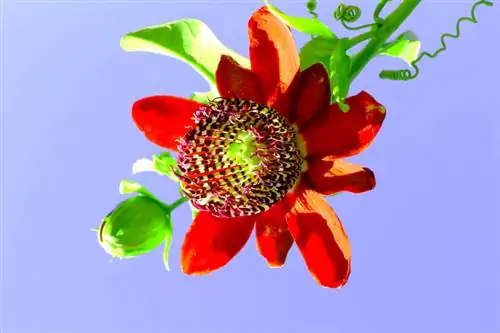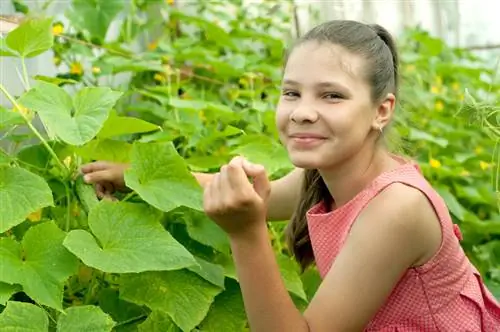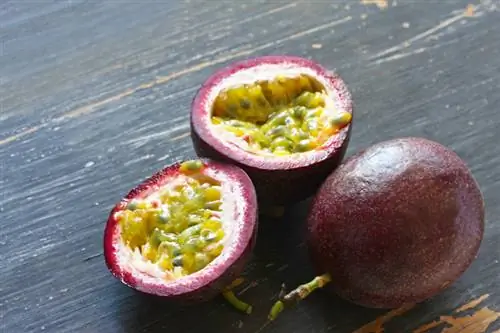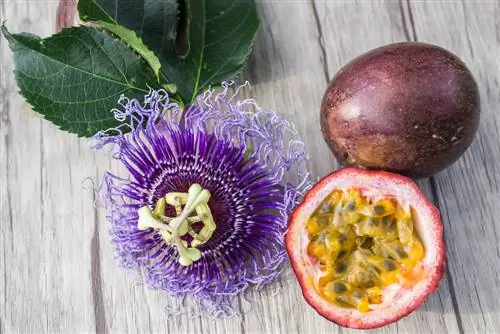- Author admin [email protected].
- Public 2023-12-16 16:46.
- Last modified 2025-01-23 11:20.
Most varieties of passion fruit actually come from tropical regions in South America and Australia. However, under certain conditions, the plant can also produce ripe fruits in this country.
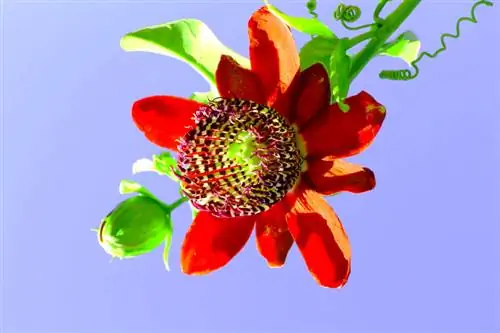
How can I grow passion fruit myself?
To grow passion fruit successfully, you should soak the seeds in warm water, sow them at a germination temperature of around 20°C and ensure consistent moisture. The plant blooms in spring and autumn and requires a frost-free, bright place to overwinter.
Preparing the passion fruit seeds for sowing
You can use special seeds from garden shops to grow the plants. In this case, pay attention to whether they are varieties with edible fruits or Passiflora varieties grown purely for their flowers. You can take the seeds from the purple-colored passion fruits or the yellow grenadillas, also known as passion fruit, and use them to grow young plants. However, you should first soak them in warm water so that you can remove the pulp before sowing. This is the only way you can prevent the seeds from molding and also prepare them for any drying and storage that may be necessary. If you want to sow the seeds later and plant them in pots, you can store them dried in air-permeable paper bags for a few months.
Germination and growth of passion flowers
Due to their origin in the tropics, passion fruit seeds require a germination temperature of around 20 degrees Celsius and a consistently high substrate moisture level. These conditions can be easily achieved with an indoor greenhouse (€24.00 on Amazon) on the windowsill. However, this should be ventilated regularly so that moisture does not build up and mold does not form. The seeds are only thinly covered with soil and should have germinated in about three weeks. Since only certain varieties can withstand temperatures below freezing for a short time, the season for passion flowers outdoors is limited to the period between spring and autumn. Over the winter you should overwinter the passion flower, which is usually cultivated as a pot plant, in a frost-free and bright place. The plant sometimes causes certain parts of the plant to die, but in the spring it sprouts new and larger ones from the rootstock.
The pollination of passion flower flowers
Even with just one plant in the pot, you can get the passion flower to bloom and produce fruit and seeds for further cultivation. Use a brush to dust the pistils of the self-fertile flowers with some pollen from the anthers.
Tips & Tricks
Since the passion flower (passiflora) comes from frost-free areas, its seeds can be sown directly from the ripe fruits without waiting.

